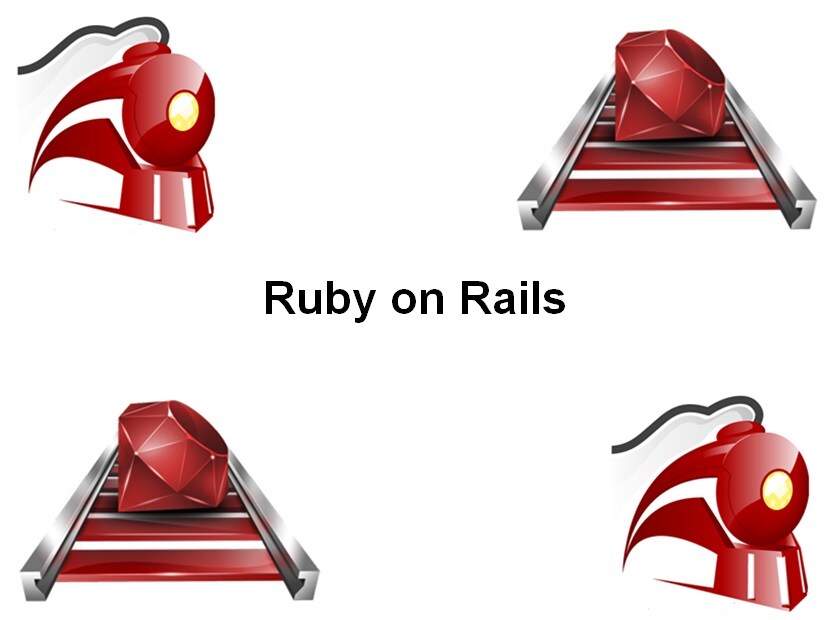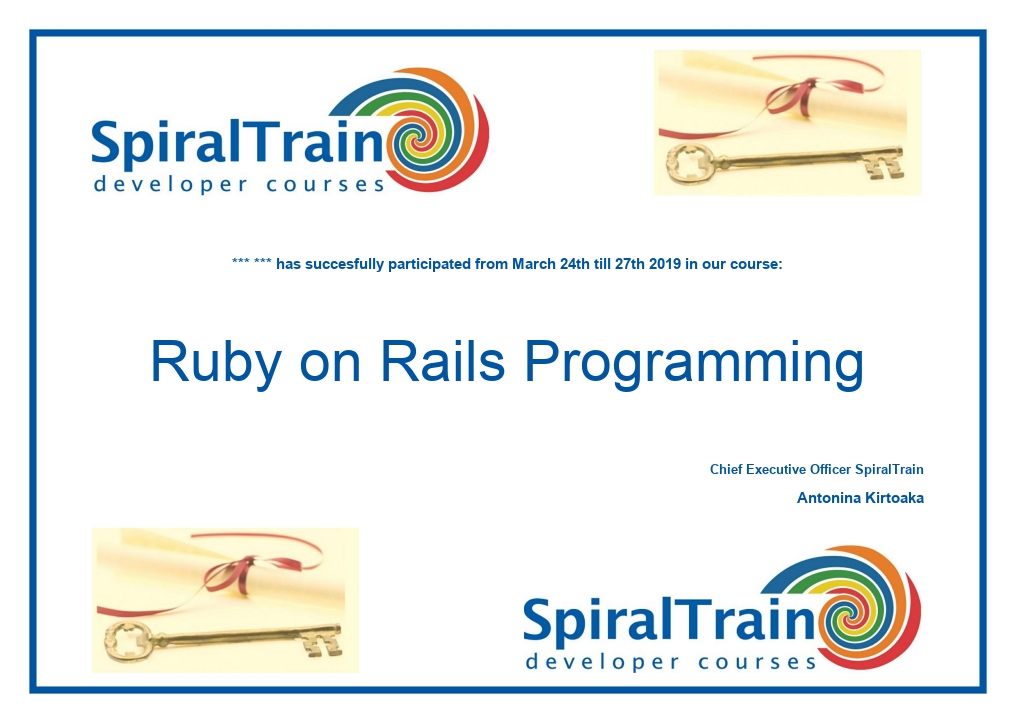-
Learning by doing
-
Trainers with practical experience
-
Classroom training
-
Detailed course material
-
Clear content description
-
Tailormade content possible
-
Training that proceeds
-
Small groups
In the course Ruby on Rails Programming from SpiralTrain, participants learn to develop Web applications with the Model View Controller (MVC) Framework Ruby on Rails. Rails is a framework for pragmatically developing a full-blown web application. Rails applications are based on the principle of convention over configuration. Templates can be generated automatically for many parts of the application, after which the template code can be further extended.
The Ruby on Rails Programming course starts with an explanation of the directory structure of Rails applications. Also discussed are using the Ruby Console, the principles of Rails Routing and installing Ruby Gems.
Then attention is paid to how Ruby Model classes can be generated and how these maps on database tables. Explained is how Database Migrations are created from the model classes that can create database tables with create queries. Many applications require the CRUD (Create, Read, Update and Delete) Pattern which is treated as well.
User input in Web Applications mostly comes from Forms and the Ruby on Rails Programming course discusses Form Creation with the Forms Builder and form helpers. Form validation and handling of errors are also covered.
Next attention is paid to Object Relational Mapping in Ruby on Rails with Active Records. In the application, the developers usually then do not have to write SQL statements, since the SQL statements are generated by the Framework.
Also covered is how views are created in Ruby on Rails based on templates controlled by Action Controllers. Explained is how View paths can be modified with Prepend and Append.
Finally, some advanced topics are discussed such as security, the creation and handling of Rest APIs, as well as caching, performance and troubleshooting.
The course Ruby on Rails Programming is intended for developers who want to develop applications with the new state of art framework Ruby on Rails or Rails.
Basic programming experience and knowledge of the Ruby Programming language is required. Knowledge of web standards such as HTTP and HTML is an advantage.
The theory is discussed on the basis of presentation slides. The concepts are illustrated with demos. The theory is interspersed with exercises. The course material is in English. The course times are from 9.30 up and to 16.30.
Participants receive an official certificate Ruby on Rails Programming after successful completion of the course.

Module 1 : Rails Intro |
Module 2 : Rails and MVC |
Module 3 : Forms |
|
Ruby on Rails Stack Rails Environments Rails Configuration Convention over Configuration Installing Ruby Gems Development Server Default Page Ruby Console Rails Routing Project Folders Generating Controllers Embedded Ruby in View ERB Templates |
Model to Database Generating Models Database Migrations Database Interaction CRUD Pattern Creating Routes Resourceful Routing routes Command Creating Links link_to Helper redirect_to and render Strong Parameters Associating Models |
Using Form Builder form_with Helper Validations Displaying Errors full_messages_for form_tag Helpers Edit Actions Destroy Actions Types of templates ERb template Builder template Rendering Adding Styling |
Module 4 : Active Record |
Module 5 : Action View |
Module 6 : Advanced Rails |
|
Active Record Pattern Object Relation Mapping Naming Conventions Schema Conventions Active Record Models Validations Callbacks ActiveRecord Migrations Active Record Associations Scaffolding Query Interface Dynamic Finders Ordering and Grouping Joins |
Action Controllers Action View Templates and Layouts Partial Layouts Request Passing View Paths Prepend View Path Append View Path Helpers Localized Views Advanced Helpers Session Management UserControl XML and Active Resource |
Rails Security Authentication Input Validation Preventing XSS Dedicated Accounts Rails and REST map.resources RESTFul Operations Generating REST Actions Logging and Troubleshooting Caching and Performance Cache Fragments Batch Processing Background Processing |
